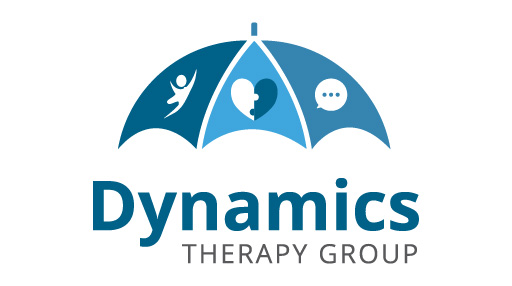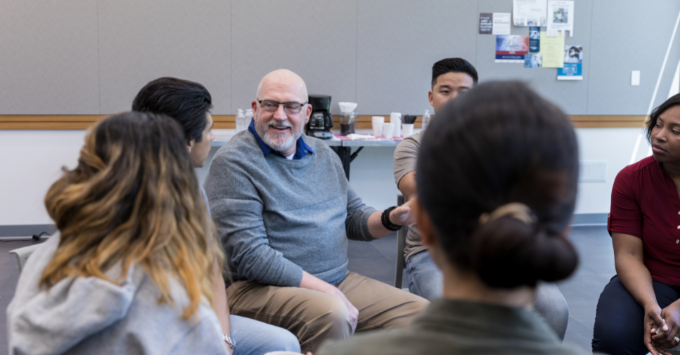
What is Social Communication?
Social communication refers to the way in which children use language to interact with others in different social situations (American Speech-Language-Hearing Association, n.d.).
Social communication skills include:
- The ability to use language for a variety of purposes (E.g. Greeting; requesting; protesting; sharing ideas and feelings; initiating interaction with peers; participating in conversations; recounting past events; and negotiating conflicts)
- The ability to figure out the social situation/ context and unspoken social rules
- The ability to “tune in ” to and figure out other people’s thoughts and messages. This involves paying attention to the verbal and non-verbal communication of others (E.g. facial expressions, tone, eye gaze, gestures, or even the meaning behind words) and considering the perspective of others
- The ability to respond appropriately based on the context and people involved (E.g. When having a conversation with others, a child takes turns to speak. He looks at the speaker; shows interest by listening to the other person and then following up with a comment or question that relates back to what the person has just said).
(American Speech-Language-Hearing Association, n.d.; Social Thinking, n.d.; Sussman, n.d).
When do we use our Social Communication Skills?
We use our social communication skills all the time! We use our social communication skills when interacting with others, watching a video or movie, reading, and writing. We also use our social communication skills in different settings, which include the classroom and at work.
Why do we need social communication skills?
Children need social communication skills to make friends and engage in successful conversations with others.
Social communication skills are critical for a child to be successful at school. Children tap on their social communication skills when they have to interpret their friends and teachers and adapt their behaviour based on the perceived thoughts and feelings of others. Social communication skills also help children share space with others appropriately; work with others in group work; interpret and respond to the curriculum effectively (E.g. Understanding the writer’s motives and intentions, grasping the main idea, predicting future events during reading comprehension; understanding figurative language such as metaphors, analogies, and idioms; providing coherent ideas with sufficient details in the verbal and written expression) (Winner, 2015; Social Thinking, n.d.).
Leisure activities also require us to think socially as well. To fully comprehend a movie, video, or novel, we must consider how the characters are feeling and thinking.
What is Social Communication Disorder?
In social situations, a child with a social communication disorder may struggle to communicate appropriately, both verbally and non-verbally. He may have difficulties with social interaction and social understanding (Paul & Murray, 2015).
Children with social communication disorder may have trouble:
- Engaging in conversations with others (E.g. Asking relevant questions or sharing related ideas)
- Identifying and repairing conversation breakdowns (E.g. Rephrasing what is misunderstood)
- Following unspoken social rules (E.g. Taking turns, staying on topic)
- Observing and/or interpreting non-verbal cues (E.g. facial expression, body language, tone), spoken language and social context simultaneously
- Using appropriate verbal and nonverbal communication (E.g. Maintaining eye contact with others) with others
- Understanding another person’s point of view
- Establishing and maintaining friendships
- Talking about things that are of interest to someone else (He may be talking about things that he’s interested in).
- Comprehending and telling stories in a logical and organised manner.
(American Speech-Language-Hearing Association, n.d.; Winner, 2007)
A Speech Therapist can help children with social communication difficulties. Approach a Speech Therapist if you have concerns about your child’s social communication skills.
Causes of Social Communication Disorder
It’s unknown what causes Social Communication Disorder. But it frequently occurs with other conditions such as language disorders, attention deficit hyperactivity disorder, and written language disorders (Paul & Murray, 2015).
Social communication difficulties are a defining feature of autism spectrum disorder (ASD), in addition to restricted, repetitive behaviours. As such, children with ASD are not diagnosed with Social Communication Disorder (American Speech-Language-Hearing Association, n.d.).
The Development of Social Communication
Having knowledge of the social communication milestones can help you better understand what your child lacks in his communication and what kind of help he needs.
First Year of Life
- Prefers looking at human faces and eyes.
- Prefers listening to the human voice over the sounds around him.
- Copies simple actions he sees his mother doing.
- Follows caregiver’s eye gaze and gets interested in the things his caregivers point to.
- Uses gestures and vocalisations to gain attention, protest, make requests, and direct others.
- Plays simple interactive games (E.g. Peek-a-boo)
Second Year of Life
- Understands and uses a variety of gestures (E.g. Pointing to things they want, sharing their interest by pointing to objects they want others to look at).
- Responds to the speech of others by giving eye contact, vocally responding or repeating a word said.
- By the end of the second year, a child uses words for a variety of reasons (E.g. Gaining attention, asking questions, protesting, commenting on object/action, answering simple wh- questions).
- Participates in verbal turn-taking with a limited number of turns.
Preschool Years (3-5 years)
- Expresses own views, thoughts, and feelings with others.
- Consider others by making a comment or asking a question about what the other person just said in conversation.
- Makes conversational repairs when the listener has not understood.
- Play collaboratively with others and take turns.
- Stories have a sequence of events but no central character or theme.
- Between the ages of 4-5, a child develops the theory of mind. This refers to the understanding that others do not share the same feelings and thoughts (E.g. Understanding that different people want different things; different people have different thoughts about the same thing; seeing leads to believing etc)
School-age years (6 onwards)
- Develops increasing understanding of theory of mind (E.g. Learning to predict what one person thinks or feels about what another person is thinking or feeling. Understanding complex language such as lies, sarcasm, and figurative language.)
- Demonstrates improved conversational skills (E.g., Maintains topic, increased number of turns).
- Stories have a well-developed plot and character with sequenced events.
Based on the social communication benchmarks and milestones published by the American Speech-Language-Hearing Association (n.d.), the Hanen Centre (Sussman, n.d.) as well as the Singapore Pro-Ed Chart (Brebner et al., 1996).
Building blocks of Social Communication Skills
Based on the Social Learning Tree developed by Michelle Garcia Winner (2015), the following components are critical for the development and learning of social communication skills:
- Joint attention: The ability to attend to others and the situation and interpret the intentions of others.
- Executive functioning: The ability to process and react to several stimuli at the same time.
- Central coherence: The ability to understand the big picture and the main idea of a message instead of thinking in parts.
- Theory of mind: The ability to understand different perspectives (During personal interactions, being able to track what others think and know. From this information, we can understand how we should respond and monitor our behaviour.)
- Emotional sharing and reciprocity
- Language
- Cognition
- Sensory integration: It refers to the ability to integrate the sensory inputs so that we remain aware and active at a level where we are comfortable participating in our environment.
Assessment of a child’s social communication skills:
The assessment might include a combination of parent/teacher interviews, language assessments, assessments of higher-order language skills (e.g. inferential skills, problem-solving skills, understanding of figurative language), theory of mind assessments (e.g. a child’s understanding of different thoughts and feelings), as well as informal observations of the child’s verbal and non-verbal communication during social interaction.
Interventions/ Treatment frameworks for Social Communication Difficulties
Interventions typically focus on the building blocks of social communication Skills (E.g. Theory of mind, central coherence, problem-solving skills etc), children’s verbal and non-verbal communication, social skills, and play skills.
Speech Therapists may use the following intervention or treatment framework in one-on-one therapy sessions and/or group interventions to practice target social skills in functional communication contexts. Please take note that the list below is not exhaustive.
1. TalkAbility™ — The Hanen Program® for Parents of Verbal Children on the Autism Spectrum
A program developed by the Hanen Centre, TalkAbility is designed for parents of verbal children aged 3 to 7 with difficulty communicating socially. It provides parents with practical ways to support their child’s social development. Through the Program, parents will learn how to help their child take a turn in conversation and maintain back-and-forth conversations. Parents will also learn ways to help their children pay attention to subtle non-verbal messages such as facial expressions and body language and tune in to what others are thinking (The Hanen Centre, n.d.).
2. Social Thinking
Social Thinking is a teaching methodology and treatment framework developed by Michelle Garcia Winner, suitable for children aged 4 to adults with strong language and learning abilities (Social Thinking, n.d.). This program is focused on improving an individual’s social thinking skills, regardless of diagnostic labels. Instead of telling the children what to do in a social situation, this approach helps children learn why and how they can demonstrate their knowledge through their behaviour (Winner, 2007). In this approach, social concepts are explained in a very concrete way that can be applied to any setting.
3. Social Story™
A social story is a simple story written from a child’s perspective to increase the child’s awareness of positive and appropriate social behaviours (Gray, 2010). It was developed by Carol Gray as a way to give children information about a specific social situation. The story describes what is happening, why, and how people feel and think in the situation. The story helps children to understand the situation and learn how to behave in that situation (Raising children network, 2021). For more information on social story or guidelines for writing the stories, you can refer to Carol’s Gray’s The new Social Story™ book.
4. Social Skills Groups
This intervention teaches children appropriate ways of interacting with peers through instruction, role play, and feedback (American Speech-Language-Hearing Association, n.d.). The group intervention offers the children an opportunity to role-play and practise target social skills such as taking turns in conversation; initiating and maintaining conversations; and social problem-solving skills. The intervention is conducted in small groups (typically comprising two to eight children with social communication disorders/ difficulties) with an adult facilitator (American Speech-Language-Hearing Association, n.d; Patino, 2020).
The Importance of Parental Involvement in Intervention. Parents Make a Difference!
Parents’ involvement is an essential part of their child’s intervention. Studies have shown that interventions implemented by parents are as effective (if not more effective in some cases) as those delivered by therapists (Roberts & Kaiser, 2011). Therefore, the best form of intervention includes parents and is intensive (Lowry, n.d.).
Interventions that are implemented by parents are effective because of the following reasons:
- Parents play a key role in a child’s life. They know their child best. In contrast to therapists, parents have many more opportunities to engage their child in meaningful daily routines and activities (Lowry, n.d.).
- Intervention is an ongoing process. Children learn to communicate through daily interactions with others. Every interaction with the child is an opportunity to teach and reinforce the child’s learning. When parents make use of daily routines and activities to teach their children, it helps them learn and apply the skill in a variety of settings and real-life situations. Conversely, when a child learns a skill in a clinic setting, therapists must work on generalising the skill to meaningful contexts (Zwaigenbaum et al., 2020).
Speech therapists and parents need to work collaboratively as partners. With support from Speech Therapists, parents learn ways to support their child at home and in different social settings. Parents can create teaching moments during daily routines and activities and carry out interventions every day for their child.
Social Communication Tips:
1. Model appropriate conversation and social skills in daily routines and situations:
- Use naturally occurring teaching moments that happen during daily routines and interactions to demonstrate good social communication skills.
- Teach your child social skills and talk about the social world by pointing out why you said or did things a certain way in the social context.
2. Help your child pay attention to nonverbal messages by exaggerating your actions, gestures, and wait. This will help your child understand that communication is more than words and there’s a lot of information in your non-verbals (Sussman, 2006).
3. Discuss how your child or other person feels during everyday activities and situations, and why they feel that way (Paul & Murray, 2015). Talk about the differences in what people like and think (Sussman, 2006).
4. Use books to help your child tune in to the minds of the characters in the story. Talk about the character’s facial expressions, feelings, thoughts, and what they were doing. Talk about the different perspectives and ways to solve the problem in the situation. Relate the story to your child’s daily life experiences (Paul & Murray, 2015; Sussman, 2006).
5. Focus on your child’s appropriate behaviours (Winner, 2007). When you observe your child behaving in a socially appropriate way, praise him or her. By doing this, you will motivate your child and encourage appropriate behaviours.
References:
American Speech-Language-Hearing Association. (n.d.). Social Communication Benchmarks. Retrieved March 28, 2022, from https://www.asha.org/practice-portal/clinical-topics/social-communication-disorder/social-communication-benchmarks/
American Speech-Language-Hearing Association. (n.d.). Social Communication disorder. American Speech-Language-Hearing Association. Retrieved March 28, 2022, from https://www.asha.org/practice-portal/clinical-topics/social-communication-disorder/#collapse_9
Belsky, G. (2021, May 10). What is Social Communication Disorder? Understood. Retrieved March 30, 2022, from https://www.understood.org/articles/en/understanding-social-communication-disorder
Brebner, C., Gupta, A. F., & Wong, A. (1996). The Singapore Pro-Ed Chart.
Conversation and social skills. Department of Education and Training Victoria. (2020, August 26). Retrieved March 28, 2022, from https://www.education.vic.gov.au/childhood/professionals/learning/ecliteracy/interactingwithothers/Pages/conversationandsocialskills.aspx
Gray, C. (2010). The New Social Story Book: Over 150 social stories that teach everyday social skills to children. BookBaby.
Lowry, L. (n.d.). Parents as “speech therapists”. Parents as Speech Therapists. Retrieved March 28, 2022, from http://www.hanen.org/Helpful-Info/Articles/Parents-as–Speech-Therapists–What-a-New-Study-S.aspx
Lowry, L. (n.d.). The power of parents in autism intervention. Retrieved March 28, 2022, from http://www.hanen.org/Helpful-Info/Articles/The-Power-of-Parents-in-Autism-Intervention.aspx
Patino, E. (2020, December 15). FAQs about social skills groups. Understood. Retrieved March 28, 2022, from https://www.understood.org/articles/en/faqs-about-social-skills-groups
Paul, D., & Murray, D. (2015, April 3). Social Communication Disorder: Information & Treatments. Autism Speaks. Retrieved March 28, 2022, from https://www.autismspeaks.org/expert-opinion/social-communication-disorder
Roberts, M. Y., & Kaiser, A. P. (2011). The effectiveness of parent-implemented language interventions: A meta-analysis. American Journal of Speech-Language Pathology, 20(3), 180–199. https://doi.org/10.1044/1058-0360(2011/10-0055)
Social Communication Disorder (SCD). Raising Children Network. (2019, May 22). Retrieved March 28, 2022, from https://raisingchildren.net.au/guides/a-z-health-reference/scd
Social Stories. Raising Children Network. (2021, May 24). Retrieved March 28, 2022, from https://raisingchildren.net.au/autism/therapies-guide/social-stories
Sussman, F. (2006). Talkability: People skills for verbal children on the autism spectrum ; a guide for parent. The Hanen Program.
Sussman, F. (n.d.). A closer look at social communication difficulties of children with autism spectrum disorder. Retrieved March 28, 2022, from http://www.hanen.org/helpful-info/articles/a-closer-look-at-social-communication-difficulties.aspx
TalkAbility™- the hanen program® for parents of verbal children on the autism spectrum. TalkAbility – Hanen Program for Parents of Children with Asperger Syndrome. (n.d.). Retrieved March 30, 2022, from http://www.hanen.org/Programs/For-Parents/TalkAbility.aspx
The Social Thinking Methodology. socialthinking.com. (n.d.). Retrieved March 30, 2022, from https://www.socialthinking.com/social-thinking-methodology
Winner, M. G. (2015, February 10). Social Thinking Articles. socialthinking.com. Retrieved March 28, 2022, from https://www.socialthinking.com/Articles?name=developmental-treatment-approach-students-learning-issues
Winner, M. G. (2015, May). Social Thinking Articles. socialthinking.com. Retrieved March 28, 2022, from https://www.socialthinking.com/Articles?name=social-thinking-social-learning-tree
Winner, M. G. (2015, September 19). Social Thinking Articles. socialthinking.com. Retrieved March 28, 2022, from https://www.socialthinking.com/Articles?name=9-tips-talking-parents-childs-social-challenges
Winner, M. G. (2007). Thinking about you, thinking about me: Teaching perspective taking and social thinking to persons with social cognitive learning challenges. Think Social Publishing.
Zwaigenbaum, L., Bauman, M. L., Choueiri, R., Kasari, C., Carter, A., Granpeesheh, D., Mailloux, Z., Roley, S. S., Wagner, S., Fein, D., Pierce, K., Buie, T., Davis, P. A., Newschaffer, C., Robins, D., Wetherby, A., Stone, W. L., Yirmiya, N., Estes, A., … Natowicz, M. R. (2020). Early intervention for children with autism spectrum disorder under 3 years of age: Recommendations for practice and Research. Pediatric Collections: Autism Spectrum Disorder, 269–290. https://doi.org/10.1542/9781610024716-part06-ch023




